Heavy cream is a common ingredient in many recipes, from savory sauces to decadent desserts. But what do you do when you don’t have any on hand? Fortunately, making your own heavy cream is easier than you might think. With a few basic ingredients and some simple steps, you can whip up a batch of homemade heavy cream in no time.
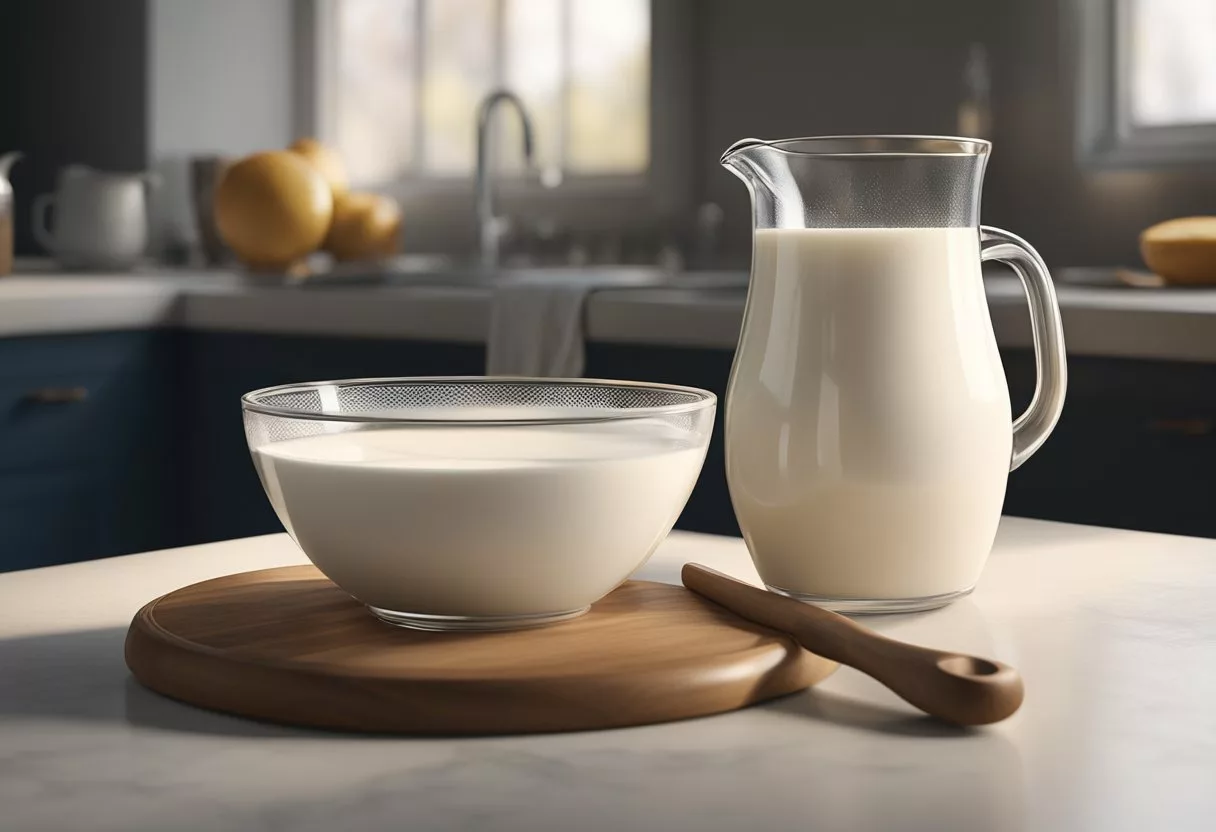
To start, it’s important to understand what heavy cream is and what it’s used for. Heavy cream is a dairy product that contains at least 36% milkfat. It’s thicker and richer than other types of cream, like whipping cream or half-and-half, and has a higher fat content. Heavy cream is often used to add richness and creaminess to recipes, and it can be whipped into stiff peaks for use in desserts like whipped cream or mousse.
If you find yourself in need of heavy cream but don’t have any on hand, don’t worry. There are several ways to make your own at home using basic ingredients like milk, butter, and flour. In the following sections, we’ll explore the different methods for making heavy cream, as well as some variations and substitutes you can use. We’ll also cover equipment and preparation tips, troubleshooting common issues, and more.
Key Takeaways
- Heavy cream is a dairy product that is used to add richness and creaminess to recipes.
- Homemade heavy cream can be made using basic ingredients like milk, butter, and flour.
- There are several variations and substitutes you can use to make heavy cream at home.
Understanding Heavy Cream
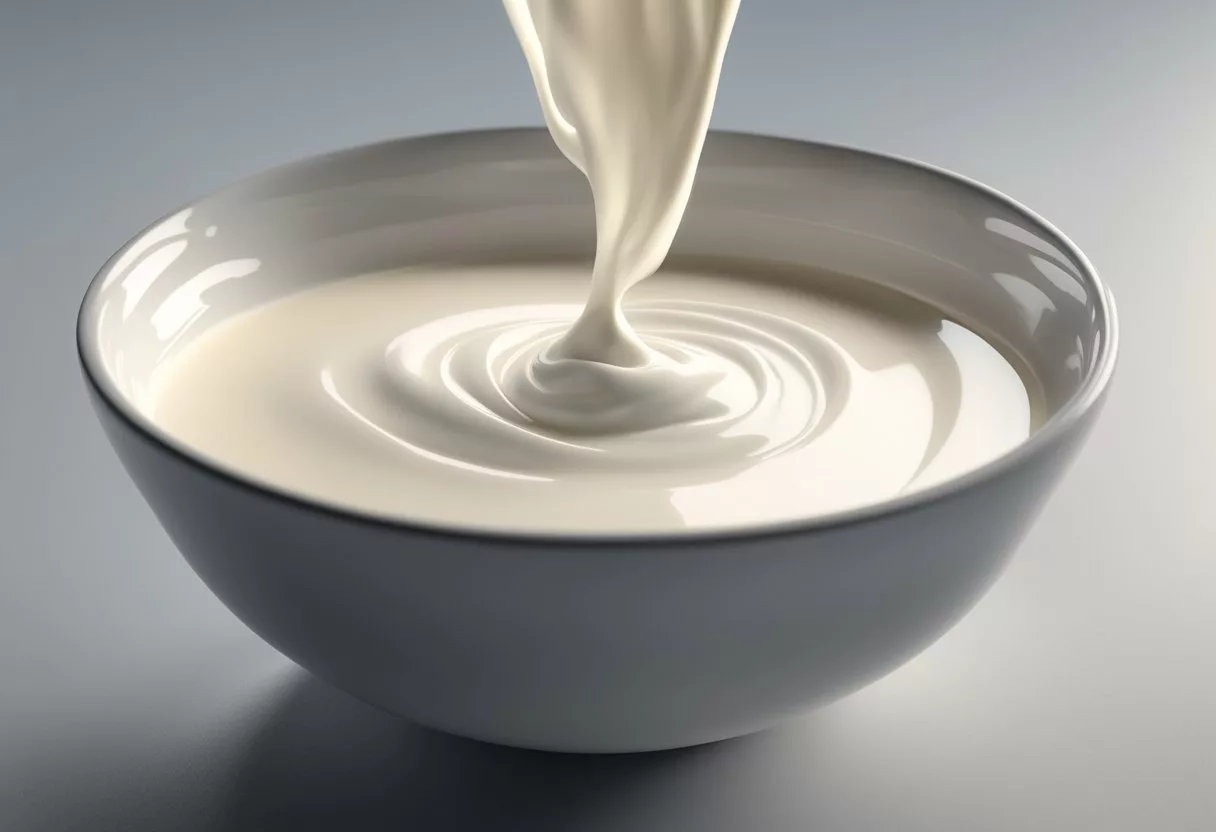
Defining Heavy Cream
Heavy cream, also known as whipping cream, is a dairy product that has a high fat content of about 36-40%. It is made by separating the milk fat from the milk through a centrifugal process. Heavy cream has a rich, creamy texture and is commonly used in cooking and baking to add flavor and texture to dishes.
Commercial Heavy Cream vs. Homemade
Store-bought heavy cream is readily available in most grocery stores and is convenient for those who do not have the time or equipment to make their own. However, homemade heavy cream can be made by combining milk and butter or evaporated milk and flour. Homemade heavy cream may not have the same consistency and flavor as store-bought heavy cream, but it can be a good substitute in a pinch.
Importance in Cooking and Baking
Heavy cream is an essential ingredient in many recipes, especially in desserts and sauces. It adds richness and creaminess to dishes and can also be used to thicken soups and stews. Heavy cream can also be whipped to make whipped cream, which is a popular topping for desserts.
Dietary Considerations
Heavy cream is a dairy product and is not suitable for those who follow a vegan or lactose-free diet. However, there are vegan alternatives to heavy cream, such as coconut cream or cashew cream. It is also important to note that heavy cream has a high fat content and should be consumed in moderation as part of a balanced diet. Those who are watching their fat intake may want to consider using a lower-fat alternative, such as half-and-half or whole milk, instead of heavy cream.
In summary, heavy cream is a versatile dairy product that is commonly used in cooking and baking. It adds richness and creaminess to dishes and can be whipped to make whipped cream. Homemade heavy cream can be made, but it may not have the same consistency and flavor as store-bought heavy cream. Those who follow a vegan or lactose-free diet can use alternative products, such as coconut cream or cashew cream.
Basic Ingredients for Making Heavy Cream
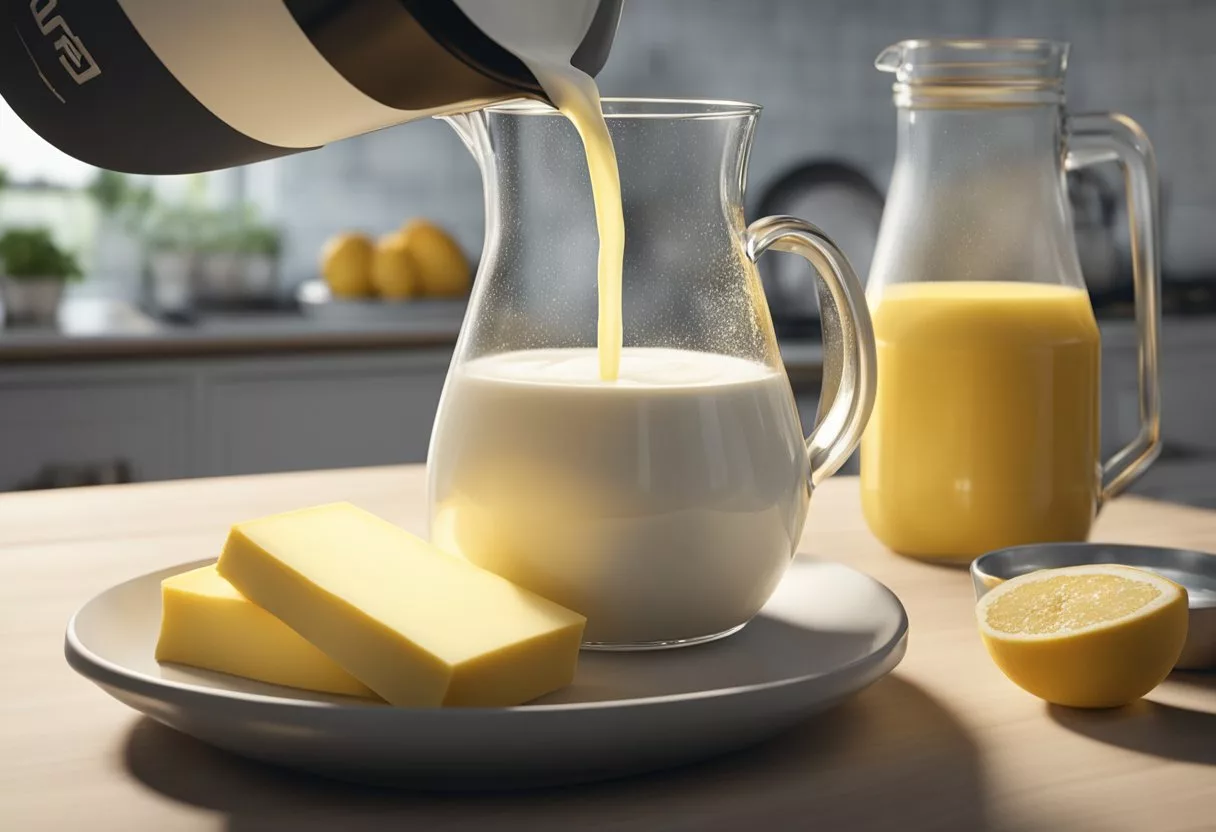
Making heavy cream at home is a simple process that requires only a few basic ingredients. The following are some of the most common methods for making heavy cream, along with the ingredients needed for each method.
Milk and Butter Method
The milk and butter method is one of the most popular ways to make heavy cream at home. To make heavy cream using this method, you will need whole milk and unsalted butter.
Milk and Oil Method
Another way to make heavy cream at home is to use the milk and oil method. This method requires whole milk and vegetable oil.
Evaporated Milk Method
The evaporated milk method is a simple way to make heavy cream at home using evaporated milk and flour.
Substitute Ingredients
If you don’t have the necessary ingredients on hand to make heavy cream, you can use substitutes. Some common substitutes for heavy cream include coconut cream, half-and-half, and Greek yogurt.
Overall, making heavy cream at home is a simple process that requires only a few basic ingredients. By using one of the methods outlined above, you can create a delicious and creamy addition to your favorite recipes.
Equipment and Preparation
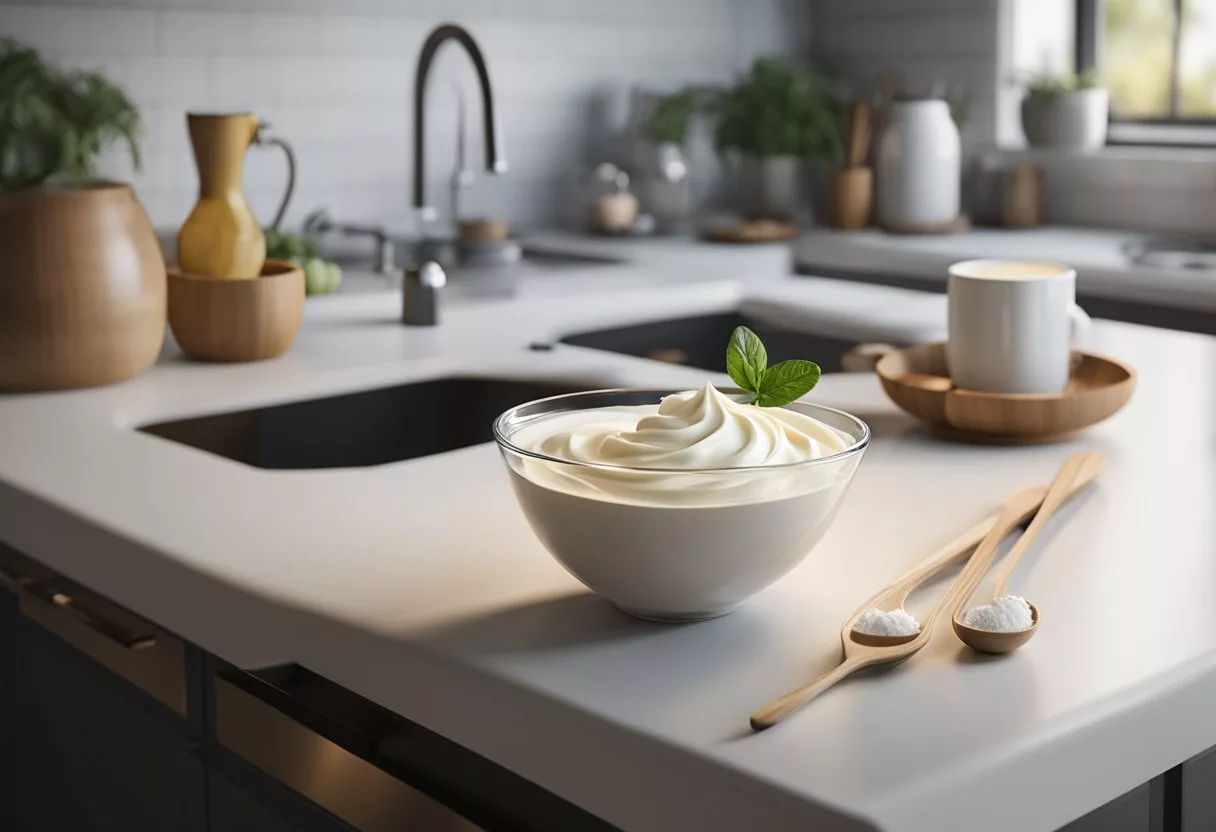
Required Kitchen Tools
Making heavy cream at home requires a few essential kitchen tools. These include a whisk, a saucepan, a mixing bowl, and a blender. A microwave can also be used to melt the butter quickly. An airtight container and a refrigerator are necessary for storing the heavy cream.
Preparation Techniques
To make heavy cream at home, the first step is to melt the butter. This can be done in a saucepan over low heat or in a microwave. Once the butter is melted, it can be combined with low-fat milk and flour in a mixing bowl or blender. A whisk can be used to mix the ingredients thoroughly.
Another technique involves using cornstarch to thicken the milk. A smooth paste is created by mixing milk and cornstarch. This paste is then added to heated milk and stirred until it thickens. This technique is particularly useful for making sauces and stews.
It is important to keep in mind that making heavy cream at home requires patience and attention to detail. The mixture should be stirred constantly and heated over low heat to avoid burning. Once the heavy cream is made, it should be stored in an airtight container in the refrigerator for up to a week.
By using the right equipment and preparation techniques, anyone can make heavy cream at home with ease.
Step-by-Step Guide to Making Heavy Cream
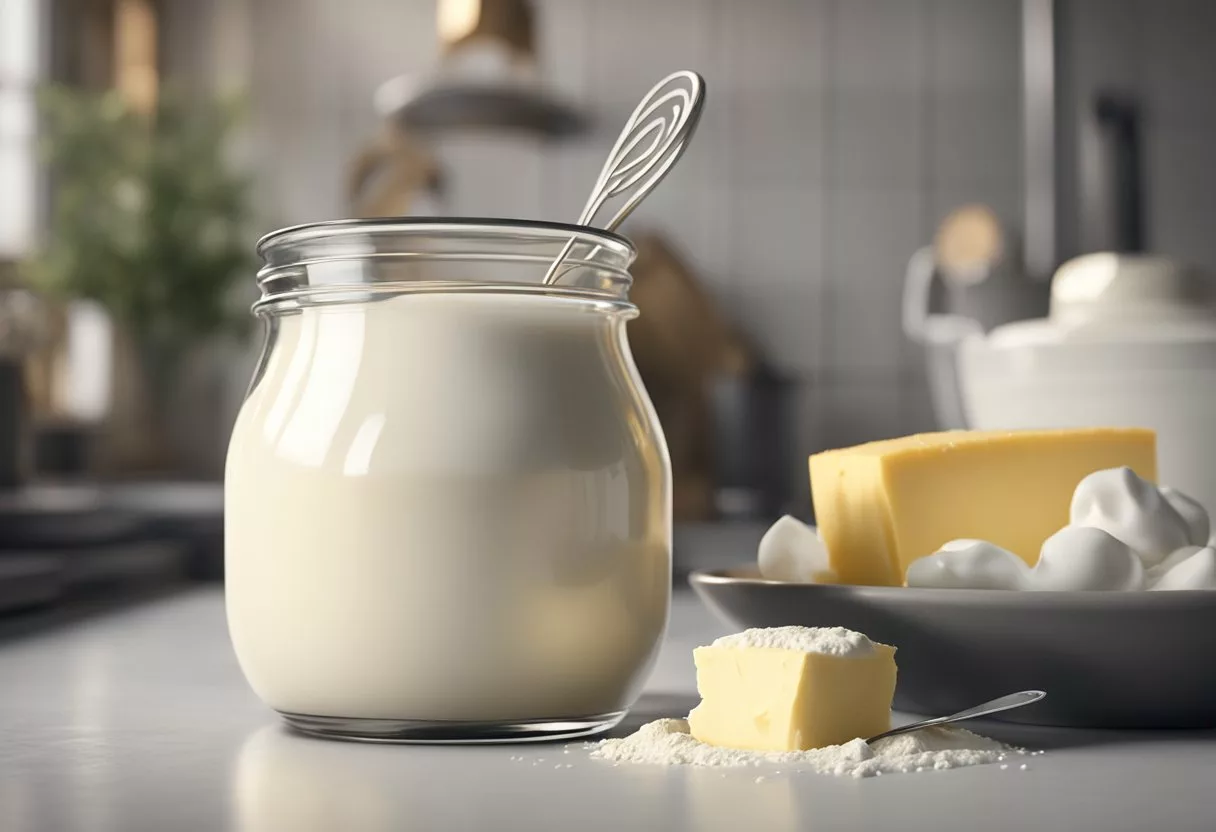
Making homemade heavy cream is a simple process that requires only a few ingredients and a little bit of patience. The following step-by-step guide will walk you through the process of making your own heavy cream at home.
Whisking to the Right Consistency
To make homemade heavy cream, start by whisking melted butter until it reaches the right consistency. This process can take anywhere from 2 to 5 minutes, depending on the temperature of the butter and the speed of your whisk. It’s important to whisk the butter until it is light and fluffy, as this will help to create a smooth and creamy texture in your finished product.
Heating and Combining Ingredients
Next, heat your low-fat milk over low heat until it is warm but not boiling. Slowly pour the warm milk into the melted butter, whisking constantly to combine the ingredients. Continue whisking until the mixture thickens slightly and becomes smooth and creamy.
Cooling and Storing
Once your heavy cream mixture has thickened to the desired consistency, remove it from the heat and allow it to cool to room temperature. Once cooled, transfer the mixture to an airtight container and store it in the refrigerator for up to 1 week.
It’s important to note that homemade heavy cream may not have the same shelf life as store-bought heavy cream, so it’s best to use it as soon as possible. Additionally, the consistency of your homemade heavy cream may vary depending on the temperature of your ingredients and the speed at which you whisk them. However, with a little bit of practice, you’ll be able to create a smooth and creamy homemade heavy cream that’s perfect for all of your cooking and baking needs.
Applications of Homemade Heavy Cream
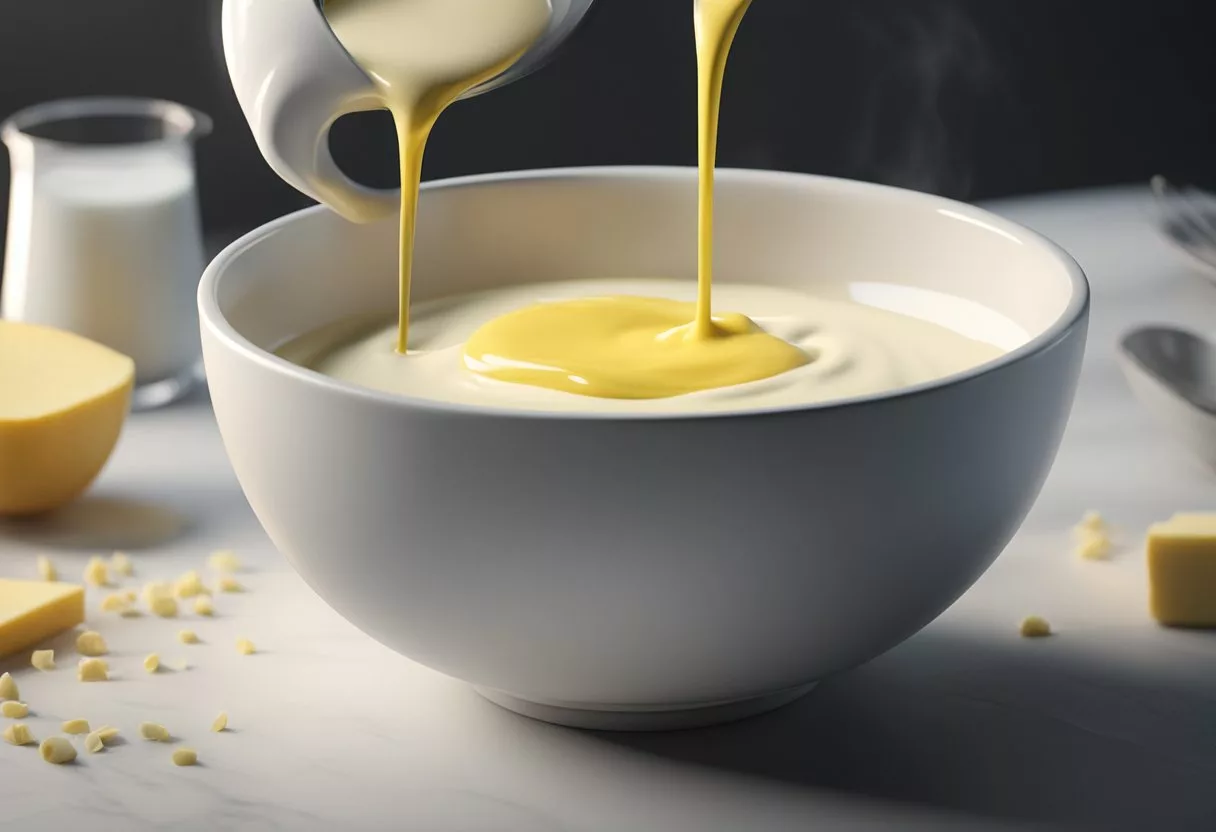
Using in Recipes
Homemade heavy cream is a versatile ingredient that can be used in a variety of recipes, from sauces and desserts to soups and casseroles. It can be used as a substitute for store-bought heavy cream in any recipe. When using it in recipes, it is important to keep in mind that homemade heavy cream has a lower fat content than store-bought heavy cream, which may affect the final outcome of the recipe.
Whipping and Thickening Techniques
Homemade heavy cream can be whipped and used to top desserts or added to coffee as a creamer. When whipping homemade heavy cream, it is important to chill the cream and the bowl in which it will be whipped. Whipping homemade heavy cream requires more time and effort than store-bought heavy cream, but it can still be whipped to soft or stiff peaks. Homemade heavy cream can also be used to thicken soups and sauces.
Alternative Uses
Homemade heavy cream can also be used in savory dishes, such as casseroles. It can be added to sauces to make them richer and creamier. It can also be used as a coffee creamer. Additionally, homemade heavy cream can be used in place of milk in many recipes to add richness and depth of flavor.
Overall, homemade heavy cream is a great ingredient to have on hand for both sweet and savory dishes. It can be used in a variety of recipes and can be whipped and used to top desserts or added to coffee as a creamer. When using homemade heavy cream, it is important to keep in mind its lower fat content and adjust the recipe accordingly.
Variations and Substitutes
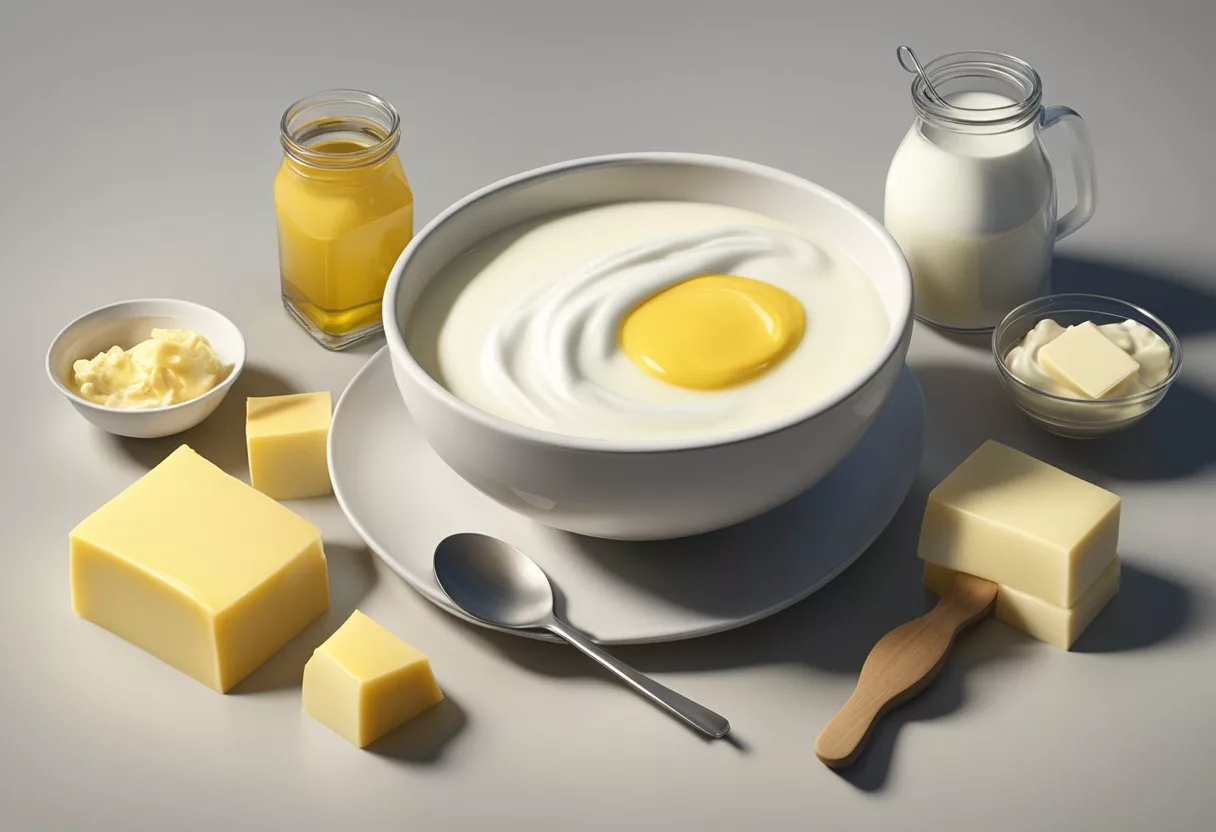
Dairy-Free and Vegan Alternatives
For those who are vegan or have lactose intolerance, there are several dairy-free heavy cream substitutes available. One popular option is coconut cream, which can be used in both sweet and savory dishes. It has a rich and creamy texture and can be whipped like traditional heavy cream. Soy milk and tofu are also good options, especially for savory dishes like soups and sauces.
Healthier Substitutes
For those looking for a healthier alternative to heavy cream, there are several options available. Greek yogurt and cottage cheese are both good substitutes that are high in protein and low in fat. Skim milk can also be used as a lighter option. For a thicker texture, cornstarch can be added to skim milk to create a heavy cream substitute.
Heavy Cream in Different Cuisines
Heavy cream is a common ingredient in many dishes, especially in Italian and French cuisine. In Italian cuisine, heavy cream is often used in dishes like Alfredo sauce and risotto. In French cuisine, it is used in dishes like quiche and crème brûlée. In American cuisine, heavy cream is often used in desserts like cheesecake and pudding.
When substituting heavy cream in these dishes, it is important to choose a substitute that will not alter the flavor or texture of the dish. For example, coconut cream may not be the best substitute for Alfredo sauce, as it may add a coconut flavor to the dish. Greek yogurt or cottage cheese may be a better option in this case.
Overall, there are many variations and substitutes for heavy cream that can be used in a variety of dishes. Whether you are looking for a dairy-free or healthier option, there are several alternatives available that can be used in place of heavy cream.
Troubleshooting Common Issues
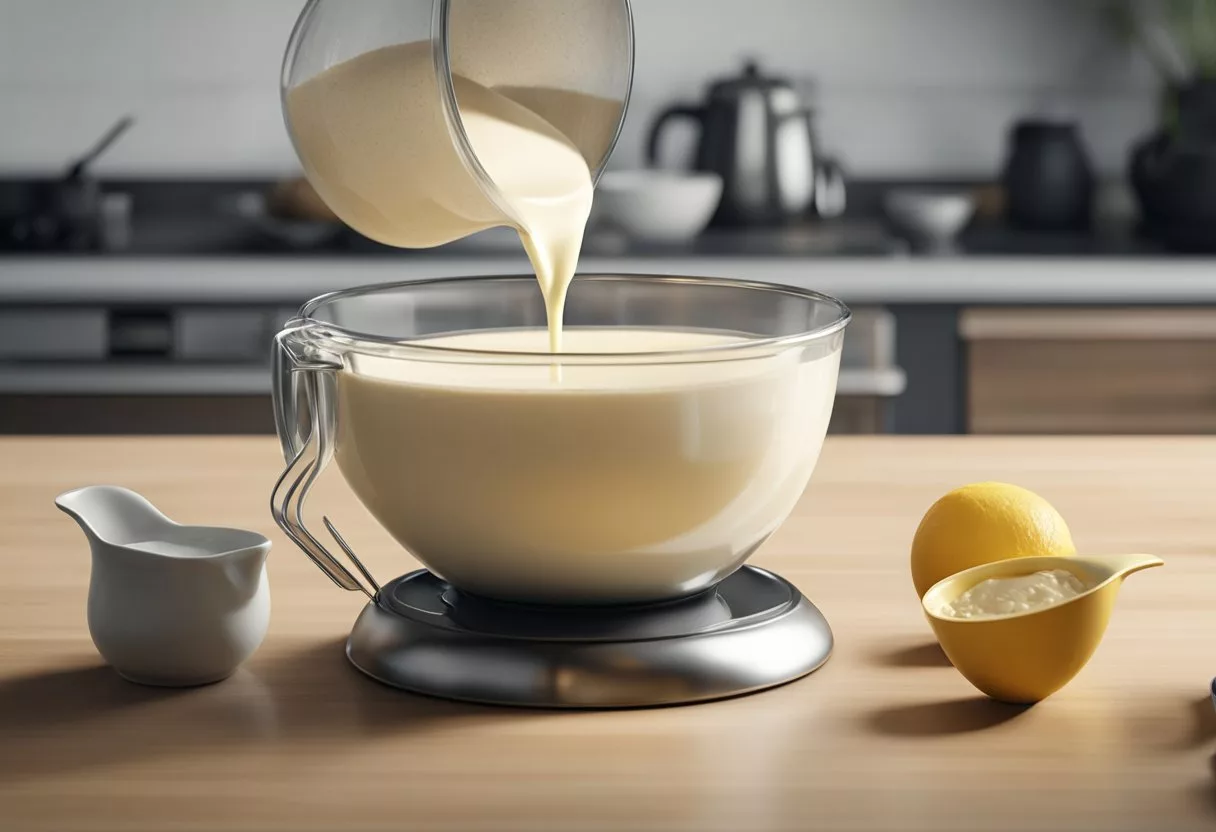
Preventing Curdling
Curdling occurs when the cream separates into curds and whey, resulting in a grainy texture. To prevent curdling, it is important to use fresh cream and avoid overheating it. Overheating can cause the fat and liquid to separate, leading to curdling. It is also important to add any acidic ingredients, such as lemon juice or vinegar, slowly and gradually while whisking the cream constantly. This helps to prevent the cream from curdling.
Achieving Desired Thickness
To achieve the desired thickness of heavy cream, there are a few things to keep in mind. First, it is important to use cream with a high fat content, ideally around 36% or higher. Lower fat creams may not thicken as well. Second, it is important to chill the cream and any mixing utensils before whipping. This helps the cream to thicken more quickly. Finally, it is possible to add a thickening agent like cornstarch or gelatin to the cream to help it thicken.
Flavor Adjustments
Heavy cream has a rich, creamy flavor that pairs well with many different dishes. However, it is possible to adjust the flavor of heavy cream to suit your preferences. For a vanilla flavor, add a small amount of vanilla extract to the cream before whipping. For a tangy flavor, add a small amount of lemon juice or vinegar to the cream while whipping. It is important to add these flavorings slowly and gradually while whisking constantly to prevent curdling. If you prefer a sweeter flavor, you can add a small amount of sugar or honey to the cream.
Overall, troubleshooting common issues with making heavy cream involves paying attention to the quality of the cream, the temperature, and the mixing process. By following these tips, it is possible to achieve a smooth, creamy texture and rich flavor in your homemade heavy cream.
Preservation and Shelf Life
Heavy cream is a perishable dairy product, and it is important to store it properly to ensure its freshness and safety. In this section, we will discuss some tips on how to preserve heavy cream and extend its shelf life.
Proper Storage Techniques
The best way to store heavy cream is in an airtight container in the refrigerator. The container should be placed on the bottom shelf or in the back of the refrigerator, where it is coldest. According to the USDA, opened or unopened heavy cream can be stored in the refrigerator for up to a month, assuming it has been kept at a constant temperature and not left out on the counter for extended periods of time. It is important to discard any cream that has mold or an off odor.
Freezing Heavy Cream
If you have leftover heavy cream that you don’t plan to use within a month, you can freeze it to extend its shelf life. To freeze heavy cream, pour it into a freezer-safe container or a glass jar with a tight-fitting lid, leaving some room for expansion. Heavy cream can be frozen for up to 6 months, but it may lose some of its texture and quality after thawing. When you are ready to use frozen heavy cream, thaw it in the refrigerator overnight.
Extending Freshness
To extend the freshness of heavy cream, you can add a pinch of salt or a teaspoon of sugar to it before storing it in the refrigerator. This will help to prevent spoilage and maintain its flavor. You can also use a whisk to beat the heavy cream until it forms soft peaks before storing it in the refrigerator. This will help to stabilize the cream and prevent it from separating.
By following these simple tips, you can ensure that your heavy cream stays fresh and safe for longer. Proper storage techniques, freezing, and extending freshness can all help to extend the shelf life of heavy cream and prevent waste.
Advanced Tips and Tricks
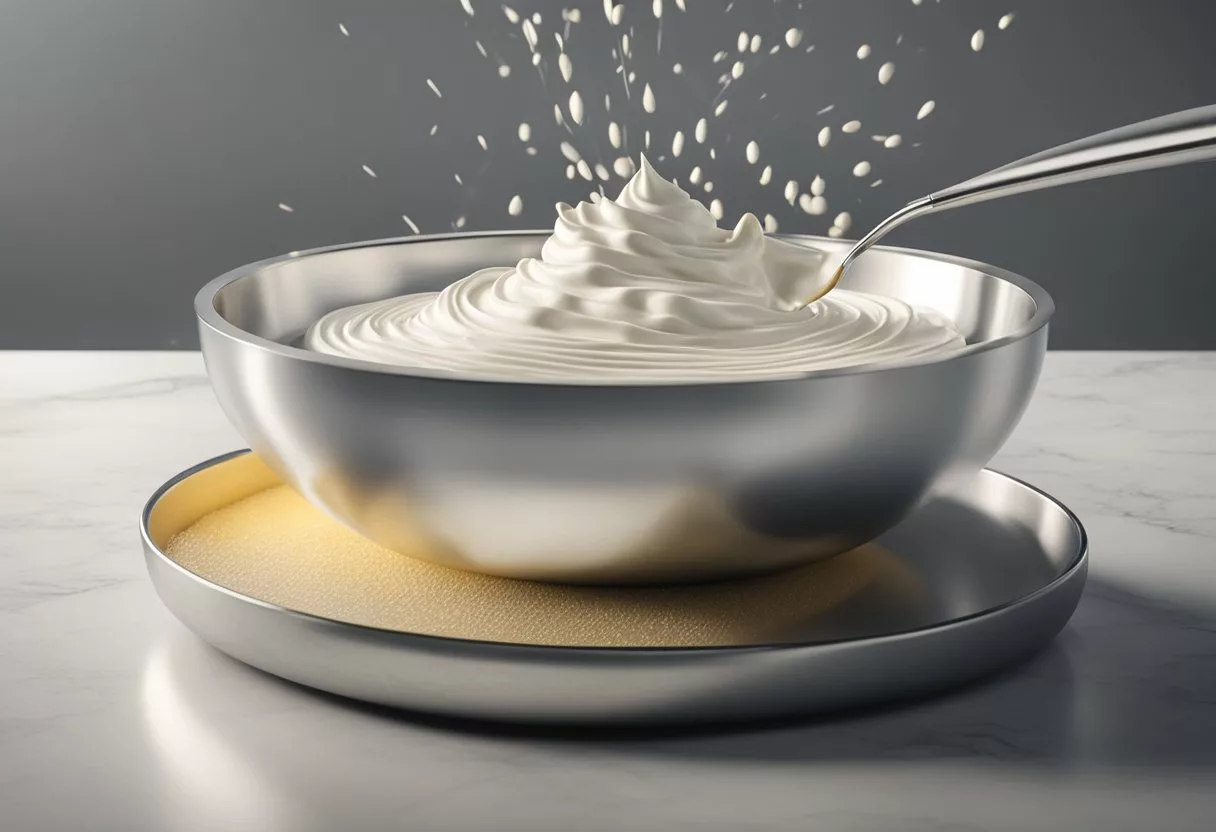
Creating Rich and Creamy Textures
For those who want an even richer and creamier texture in their heavy cream, there are a few tips and tricks to try. One option is to add a small amount of cream cheese or sour cream to the mixture. This will not only add richness but also a tangy flavor that complements sweet and savory dishes alike. Another option is to add a small amount of butter, which will give the heavy cream a richer mouthfeel.
Enhancing Flavor Profiles
While heavy cream is already rich and delicious on its own, there are ways to enhance its flavor profile even further. One option is to infuse the cream with different flavors, such as vanilla or cinnamon. This can be done by heating the cream and adding the desired flavorings before allowing it to cool and thicken. Another option is to whip the cream with a small amount of sugar or honey, which will add sweetness and a light, airy texture.
When whipping heavy cream, it is important to keep a few things in mind. First, the cream should be very cold before whipping. This will help it hold its shape and create soft peaks. It is also important not to overwhip the cream, as this can cause it to become grainy and lose its rich and creamy texture.
Overall, with a few simple tips and tricks, anyone can create delicious and creamy heavy cream at home. Whether you prefer a rich and indulgent texture or a light and airy one, there are endless possibilities for enhancing the flavor and texture of this versatile ingredient.
Frequently Asked Questions
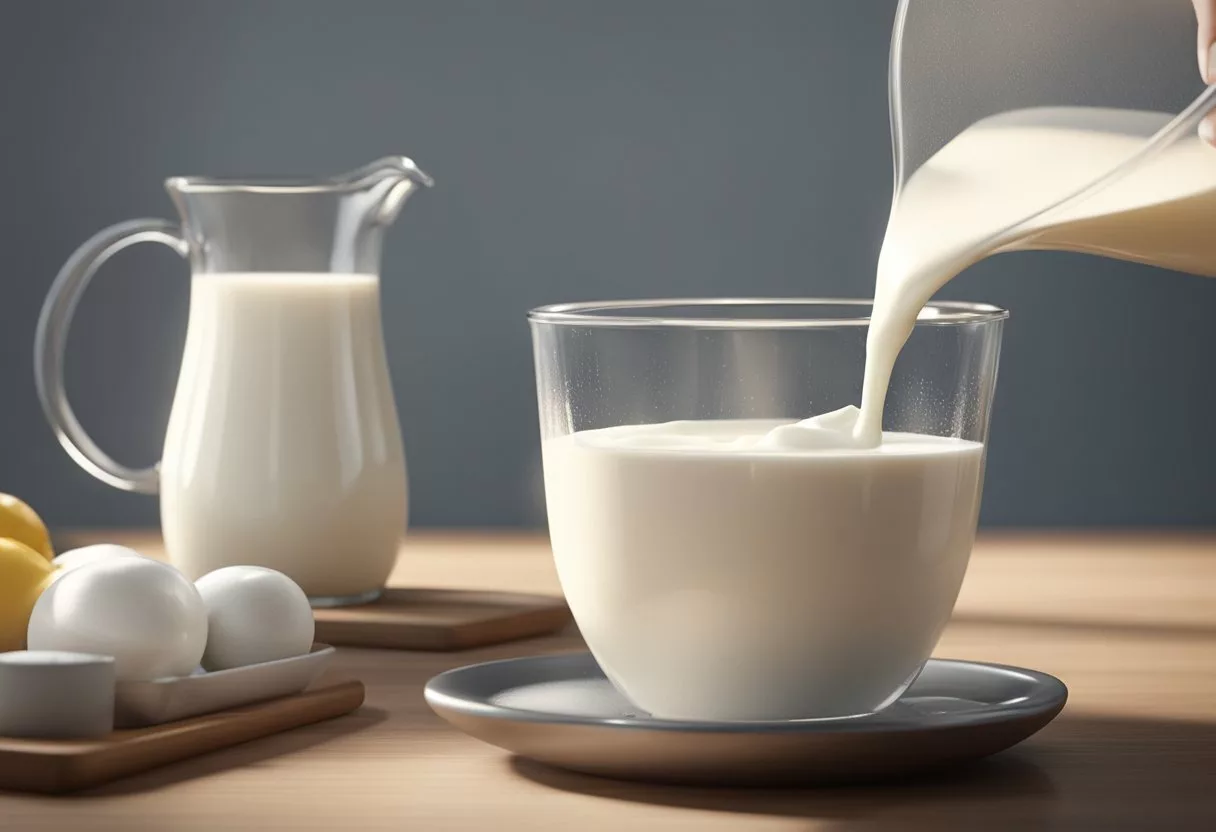
What can be used as a substitute for heavy cream in recipes?
There are several substitutes for heavy cream that can be used in recipes. Some of the most popular options include:
- Half-and-half: This is a mixture of equal parts whole milk and light cream.
- Whole milk: This can be used as a substitute for heavy cream in many recipes, but it will not provide the same richness and thickness.
- Coconut cream: This is a dairy-free option that can be used in place of heavy cream in many recipes.
- Silken tofu: This can be blended with water to create a creamy, dairy-free substitute for heavy cream.
How can I create heavy cream for pasta dishes?
To create heavy cream for pasta dishes, you can use a combination of milk and butter. Melt 1/3 cup of butter in a saucepan over medium heat, then add 3/4 cup of milk. Stir the mixture until it is well combined and heated through. This can be used in place of heavy cream in many pasta recipes.
Is it possible to make heavy cream from 2% milk?
It is possible to make heavy cream from 2% milk, but the resulting cream will not be as thick or rich as heavy cream made from whole milk. To make heavy cream from 2% milk, you can use a combination of milk and cornstarch. Mix 1 cup of 2% milk with 2 tablespoons of cornstarch to create a smooth paste. Add the paste to heated milk and stir until thickened.
Can heavy cream be made using a combination of milk and butter?
Yes, heavy cream can be made using a combination of milk and butter. Melt 1/2 cup of butter in a saucepan over medium heat, then add 1/2 cup of milk. Stir the mixture until it is well combined and heated through. This can be used in place of heavy cream in many recipes.
How do you produce heavy cream using evaporated milk?
To produce heavy cream using evaporated milk, you can combine 1 cup of evaporated milk with 1/2 cup of flour. Mix the ingredients together until they are well combined and heated through. This can be used in place of heavy cream in many recipes.
What is the method for making 2 cups of homemade heavy cream?
To make 2 cups of homemade heavy cream, you can use a combination of milk and butter. Melt 1 cup of butter in a saucepan over medium heat, then add 1 cup of milk. Stir the mixture until it is well combined and heated through. This can be used in place of heavy cream in many recipes.
